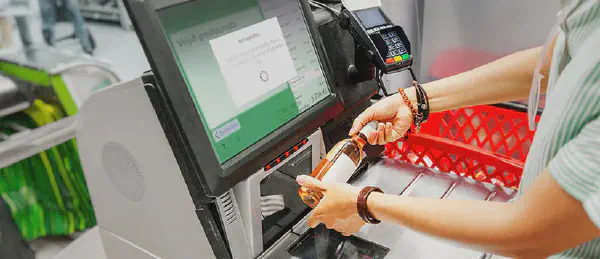
Self-checkout kiosks are becoming increasingly ubiquitous in retail stores, offering shoppers a convenient and efficient way to pay for their purchases. While traditional self-checkout systems rely on customers to scan barcodes on each item, newer systems are utilizing computer vision technology to automate the checkout process, further streamlining the shopping experience.
Computer Vision: The Key to Frictionless Checkout
Computer vision, a subfield of artificial intelligence, enables machines to interpret and understand visual information from the world around them. In the context of retail, computer vision algorithms can identify and classify objects, such as products, by analyzing images or video feeds from cameras. This capability makes computer vision an ideal technology for self-checkout systems, as it can automatically detect and track items placed on the checkout counter, eliminating the need for manual scanning.
Benefits of Computer Vision-Powered Self-Checkout
The adoption of computer vision in self-checkout systems offers several notable benefits for both retailers and consumers:
Enhanced Customer Experience: Computer vision-powered self-checkout systems provide a faster and more seamless checkout experience, reducing wait times and minimizing customer frustration.
Improved Accuracy: Computer vision algorithms can accurately identify and classify items, even those without barcodes or with damaged packaging, reducing the likelihood of checkout errors.
Reduced Shrinkage: Computer vision can continuously monitor the checkout area, deterring shoplifting and reducing shrinkage losses for retailers.
Data-Driven Insights: The data collected from computer vision systems can provide valuable insights into customer behavior and product purchasing patterns, enabling retailers to optimize their inventory management and product placement strategies.
Examples of Computer Vision-Powered Self-Checkout Solutions
Several companies are developing and deploying computer vision-powered self-checkout solutions, each with its unique approach and features. Here are a few notable examples:
Amazon’s Just Walk Out Technology: Amazon’s Just Walk Out technology uses a network of cameras, sensors, and deep learning algorithms to track customers’ movements and identify products they pick up or put down. As customers leave the store, their Amazon account is automatically charged for the items they removed.
GrabFresh’s Smart Checkout: GrabFresh’s Smart Checkout utilizes a combination of computer vision and RFID technology. Customers simply place their items on a smart shelf, and the system automatically identifies and charges them.
Trigo Vision’s Retail AI Platform: Trigo Vision’s Retail AI Platform provides a comprehensive solution for computer vision-powered self-checkout. It can identify and track multiple items simultaneously, even if they are overlapping or stacked.
The Future of Self-Checkout with Computer Vision
Computer vision technology is rapidly advancing, and its integration into self-checkout systems is expected to become even more prevalent in the future. As algorithms become more sophisticated and capable of handling a wider range of items and scenarios, computer vision will play an increasingly crucial role in revolutionizing the retail checkout experience.